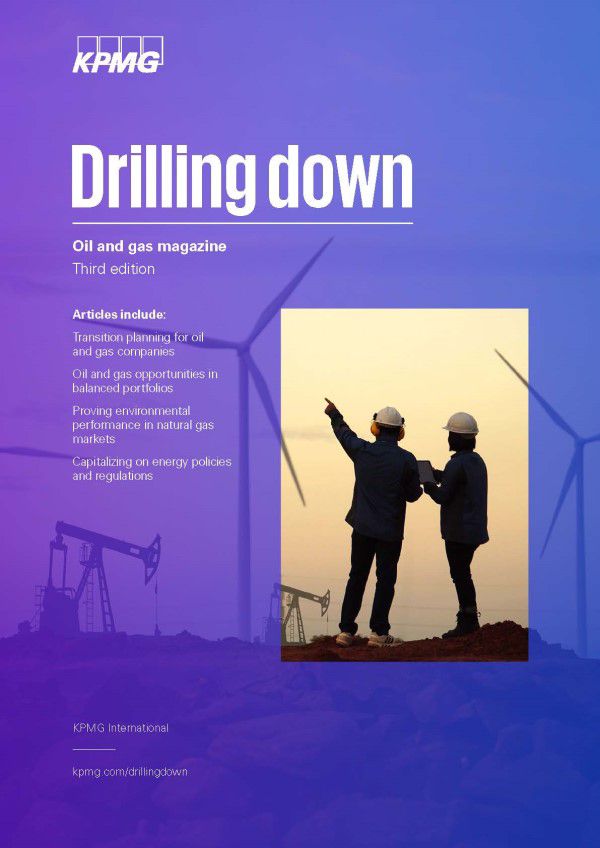By: Julie Chapel, Director, KPMG in the US; Nicole de Jager, Senior Tax Manager, Global ESG Tax, KPMG International; Ruth Guerra, Partner, Customs, Green Tax and International Trade, KPMG in France; Trevor Traxler, Partner, KPMG in Canada
In 2015, almost 200 countries around the world adopted the Paris Agreement designed to hold “the increase in the global average temperature to well below 2°C above pre-industrial levels.” The Agreement also includes a commitment to “limit the temperature increase to 1.5°C above pre-industrial levels.”1
To achieve these critical goals, greenhouse gas emissions will need to be cut in half by 2030 and virtually eliminated by 2050. Leaders in both the public and private sectors acknowledge that meeting the Paris Agreement deadlines will require compliance with several rigorous government policies and regulations.
Numerous countries, territories and regions have already established schemes to support a decrease in carbon emissions. The UK government’s Climate Change Act includes a commitment to a 100 percent reduction of emissions by 2050 compared with 1990 levels.2 The European Green Deal aims for the same goal across its member states.3 China’s latest Five Year Plan includes specific decarbonization targets.4 Saudi Arabia’s Public Investment Fund (PIF) supports a major investment portfolio with a focus on sustainable investments, both domestically and internationally.5
Several markets – the EU and UK in particular – have focused on sharpening and ramping up their existing Emissions Trading Schemes (ETS). China launched their own ETS in 2021. The EU has more recently moved to extend its schemes by implementing the Carbon Border Adjustment Mechanism (CBAM), which is designed to reduce carbon leakage and maintain the competitiveness of EU member states.
Two ways to incentivize energy transition: the European Green Deal and the US Inflation Reduction Act
Today’s environmental policies and regulations are often behavior changer oriented and are designed to accelerate global decarbonization through incentives. That, in turn, is encouraging new changes for the oil and gas sector in many markets around the world. The two leading examples of this type of legislation globally are the European Green Deal and the US Inflation Reduction Act (IRA).
The European Green Deal aims at creating a net-zero green economy by 2050, enhancing manufacturing and digital capacity in crucial industries and sustaining innovation leadership via scientific and technological investment. Achieving these goals will be facilitated, in addition of national tax incentives, by a high volume of non-tax incentives, including EU funds, national funds and the EU's Covid-specific NextGen Fund.
Opportunities supported by the European Green Deal include notably:
- Financing the development of low-carbon industrial manufacturing
- Support for lower income EU member states regarding climate neutrality
- Financing renewable energies – including hydrogen, wind, solar and biofuel
- Promotion of research and development
- Establishment of sustainable infrastructure in low-income member states
- Investments under the Important Projects of Common European Interest (IPCEI).
European Green Deal, like IRA, has a large scope and is in essence a large compilation of industrialization and innovation programs with a sustainability final goal.
The IRA is set to be the largest US congressional action on climate change, to date, with provisions that touch on a mix of energies - including wind, solar, nuclear, hydrogen, oil and gas, and biofuel - and climate-change prevention measures (such as carbon capture, battery storage, clean vehicles).6
Key opportunities supported by the IRA include:
- Investment Tax Credits (ITC) and Production Tax Credits (PTC) that are available to taxable business entities and certain tax-exempt entities eligible for direct payment of tax credits.7
- Tax-credit increases involving factors such as meeting prevailing wage and apprenticeship requirements for construction projects and using domestically sourced steel and iron.
- The monetization or transferability of IRA tax-credits, further opening investment opportunities for energy projects.
- Potential creation of demand-side incentives for M&A transactions in industries such as solar, wind, and geothermal power generation, as well as electric transmission, lithium processing, and battery manufacturing.8
- Enhancement of existing 45Q tax credit, which benefits facilities capturing and storing carbon dioxide.
- Manufacturing tax credits to increase the domestic production of components needed for the energy transformation, including critical minerals, battery components, and others.
According to American Clean Power, an industry group, nearly US$350 billion in clean energy investments were announced in the year after the IRA was passed9. Another report suggests that more than US$70 billion flowed into the US battery sector during the same period.10
There are signs that capital flow is already starting to shift to capitalize on IRA incentives and opportunities. Competition among markets for clean energy investment has ramped up considerably since the passage of the IRA, and the Act is encouraging many governments around the world to reassess their own package of clean energy incentives and policies to become more competitive.
Corporations with major investment, decarbonization or innovation projects in the U.S. or the EU might investigate if they are eligible for incentives related to the Green Deal or the IRA.
Designed with oil and gas in mind
Not all oil and gas players have taken advantage of the incentives and benefits available through the IRA, the European Green Deal, and similar schemes. In part, that is because the oil and gas sector has mainly been self-funding, with limited appetite applying for government subsidies and incentives. Some companies are also concerned about the potential optics of an oil and gas company being awarded billions in taxpayer money.
Yet the reality is that these incentives have been designed for this exact purpose. Governments recognize that many low-carbon and sustainable energy technologies currently being developed simply aren’t economically viable without government support.
Some aspects of various policy frameworks end as early as 2025. Oil and gas companies will want to explore their opportunities, and soon.
Steps to consider
Policies and regulations related to sustainable energy should be included in any business planning or portfolio diversification strategy. Based on KPMG firms experience in helping companies make the most of their opportunities in jurisdictions around the world, we suggest that organizations focus on the following three areas as they develop their energy transition strategy:
- Understand the opportunities – current and future. No two schemes are quite the same, and it will take time and insight to fully understand the implications and value of each. In many cases, this may require on-the-ground resources with local contacts and insight to help unravel the regulatory requirements and tax incentives in each market.
- Carefully assess the data and reporting. Accurate, comprehensive, and timely data is key at every stage of the process – data to develop your strategy, apply for incentives, report on results, and drive future investment decisions.
- Elevate the tax function. The tax function has become increasingly important to enabling key aspects of the oil and gas business strategy. Company executives will ensure they have the capabilities and capacity to support the company’s tax posture.
How KPMG can help
KPMG firms multidisciplinary professionals can work with you to set your ambition, develop your roadmap, and help you to execute your strategy as you reorient your organization to succeed in the new energy environment. We can assist you with:
- Developing your energy transition strategy
- Assessing current progress and reporting capabilities
- Assessing opportunities for tax credits and other governmental financing
- Achieving alignment with regulatory, policy and other requirements
- Working with relevant stakeholders and helping you to build partnerships
- Shaping your portfolio for the future.
Related content
Contact us
1 “The Paris Agreement,” United Nations Climate Change Committee, United Nations, www./unfccc.int
2 “The Climate Change Act 2008 (2050 Target Amendment) Order 2019,” UK Government
3 “The European Green Deal: Striving to be the first climate-neutral continent,” Europarc Federation
4 “ASPI Climate Action Brief: China,” Asia Society.org
5 “PIF is driving the growth of new sectors, companies and jobs, as a catalyst of Vision 2030,” Saudi Arabian Government
6 Inflation Reduction Act, kpmg.com, August 2022
7 “Summary of Inflation Reduction Act provisions related to renewable energy,” U.S. Environmental Protection Agency
8 “IRA: A Driver of Increased M&A Activity?,” ESG Investor, September 30, 2022
9 Investing in America,” Cleanpower.org
10 “One Year On, Biden’s IRA Has Changed the Battery Landscape,” Benchmark Mineral Intelligence, August 15, 2023









